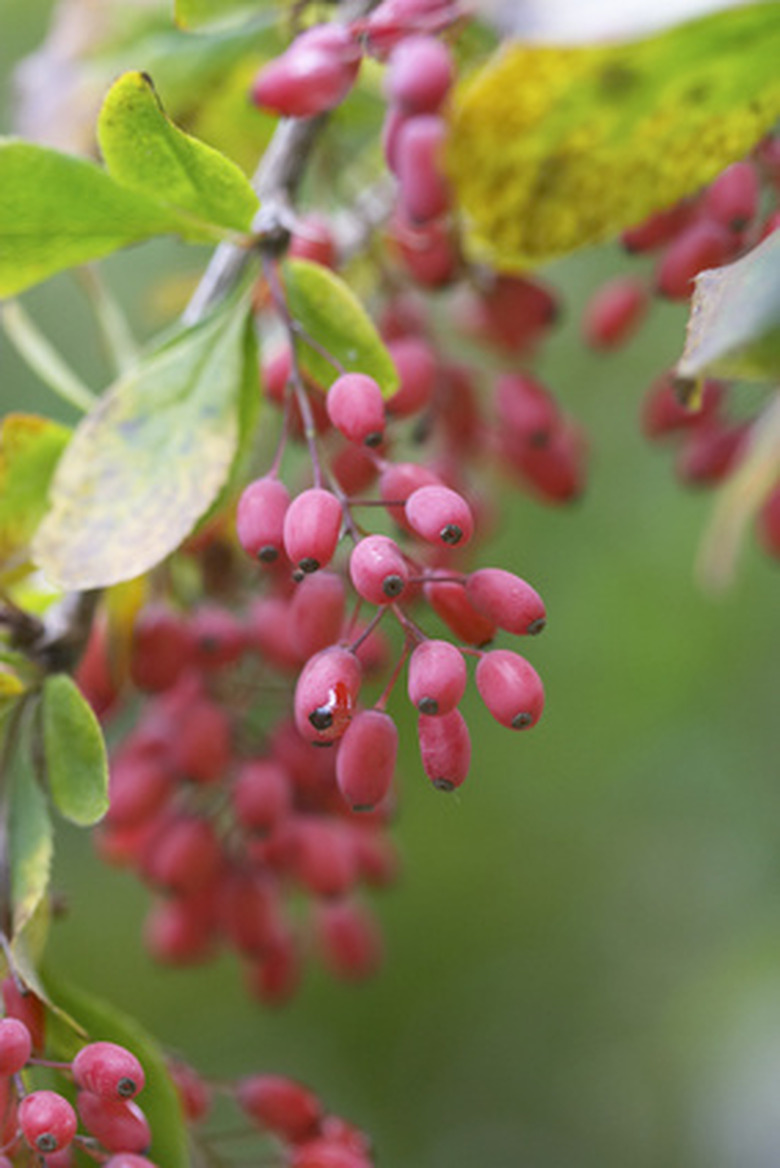Varieties Of Berberis
Berberis, a genus with 450 different species of deciduous or evergreen shrubs, is known for its striking fall foliage that ranges from wine reds to deep purples and oranges. Oftentimes barberry shrubs prefer rocky soil, but they tolerate almost all soil varieties as long as they are well-drained. They make ideal specimen shrubs and colorful borders that add warmth to the garden. Barberry shrubs grow best in full sun to part shade.
Berberis Candidula
Paleleaf barberry (Berberis candidula) is an evergreen shrub that has a slow growth rate. It grows 2 to 4 feet tall and 3 to 5 feet wide and has a dense, low-growing, hemispherical shape with arching stems. The ½-inch-long yellow flowers on paleleaf barberry emerge in early summer and are followed by the ½-inch-wide purple berries that bloom in the fall. The lustrous, dark green, 1-to-2-inch-long leaves on paleleaf barberry shrubs have spined margins and a red tinge in winter. They grow best in full sun to part shade in moist, well-drained soil. Plant paleleaf barberry in USDA zones 6 to 8.
- Berberis, a genus with 450 different species of deciduous or evergreen shrubs, is known for its striking fall foliage that ranges from wine reds to deep purples and oranges.
- Oftentimes barberry shrubs prefer rocky soil, but they tolerate almost all soil varieties as long as they are well-drained.
Berberis Koreana
Korean barberry (Berberis koreana) is a deciduous shrub with a moderate growth rate. It grows 4 to 6 feet tall and 3 to 5 feet wide, making it an ideal barrier shrub along the landscape. Korean barberry has a dense oval to haystack shape and small clusters of yellow flowers that emerge in spring and are followed by small, egg-shaped, waxy red berries in fall and winter. The dark green, 1-to-3-inch-long leaves on Korean barberry have a rounded apex and spines along the margins of each leaf. In fall, the leaves turn red to purple for a bright burst of color. Korean barberry is drought tolerant, making for a hardy barberry variety. They grow best in full sun to part shade and tolerate a wide range of soil types, excluding consistently wet soil. Plant Korean barberry in USDA zones 4 to 7.
- Korean barberry (Berberis koreana) is a deciduous shrub with a moderate growth rate.
- It grows 4 to 6 feet tall and 3 to 5 feet wide, making it an ideal barrier shrub along the landscape.
Berberis Julianae
Wintergreen barberry (Berberis julianae) is a slow-growing evergreen shrub with a rounded, mound-like form that is dense but opens with age. It grows 4 to 6 feet tall and has a spread of 6 to 8 feet. The small, yellow, spring-blooming flowers are oval in shape and are followed by the blue to black fruit that lasts into fall. The 2-to-3-inch-long, dark green, lustrous, serrated foliage on wintergreen barberry turns a wine red color in fall. Drought tolerant, wintergreen barberry is the hardiest of all evergreen barberry shrubs. They grow best in full sun to part shade and tolerate a wide range of soil types. Wintergreen barberry is suitable to grow in USDA zones 6 to 8.
- Wintergreen barberry (Berberis julianae) is a slow-growing evergreen shrub with a rounded, mound-like form that is dense but opens with age.
